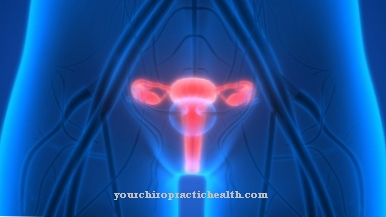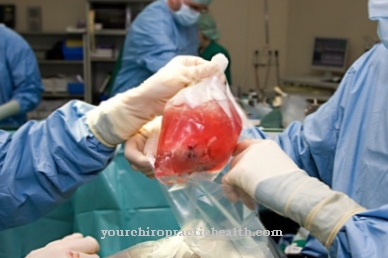The Retraction is the shrinkage or retraction of a tissue, organ, or other anatomical structure. Physiologically, during the birth of a child, for example, the maternal tissue contracts to allow the urging head to pass through. The term retraction is also relevant pathophysiologically, for example the retraction of the nipple in a carcinoma in situ.
What is retraction

"Retrahere" is a Latin verb and literally means something like "to withdraw". The term retraction is accordingly to be understood as a loan word from Latin and is associated with various meanings in medicine. As a rule, any medical process of retraction has the meaning of withdrawal, which can refer to different tissues. In medicine, a retraction implies the retraction or shrinkage of tissues, organs or other structures of the organism.
The opposite of retraction is the protraction, which in anatomy is associated with a forward movement of body parts or other structures. The lower jaw, for example, can advance and has thus performed a protraction. In contrast, when the lower jaw retracts, it retracts backwards, i.e. it pushes itself backwards.
In various contexts, retraction also represents a regression of tissues, as it is particularly relevant in the context of diseases. Basically, the term retraction is used more in pathophysiology than in physiology. This means that the retraction is mostly in association with disease processes than in association with natural body processes.
Function & task
A completely natural retraction in a healthy organism takes place, for example, as part of wound healing. If the body's own vascular system is injured, the coagulation cascade prevents blood from escaping and thus stimulates hemostasis (hemostasis). The coagulation system thus corresponds to the body's own protection against bleeding and the resulting blood loss. Accordingly, hemostasis is a vital body function.
Three steps are intertwined in blood clotting. Vasoconstriction occurs, i.e. a contraction of the vascular muscles in the injured vessel, as serotonin and thromboxane are released. In the injured blood vessel there is now a slower flow rate, which activates the sticking together of platelets. In the third step of the coagulation cascade, the injury closes with an aggregate consisting of fibrin polymers and platelets. A thrombus forms, preventing blood from escaping.
As soon as the thrombus withdraws again in the course of the subsequent wound healing, from a medical point of view it is referred to as a retraction of the thrombus. The reduction in size of blood clots is to be understood as an active work performed by the blood platelets (thrombocytes) within the hemostasis.
There are many other physiological processes that make use of the term retraction. This applies, among other things, to typical body processes during the birth of a child. With each contraction, for example, the tissue retracts over the child's head, which is pushed downwards. This tissue retraction is also a retraction.
In addition, the doctor sometimes speaks of a retraction of the testicle. This process occurs in the context of abnormalities such as the pendulum testicle, which temporarily retracts into the inguinal canal due to the contraction of the cremaster muscle. The pendulum testicle has descended into the scrotum (scrotum) and is therefore not necessarily to be understood as a pathological malformation. Pendulum testicles do not have any manifest disease value or incorrect position value.
Nonetheless, if the Kremaster reflex is particularly lively, they temporarily change their localization and lie abnormally. In this context, the retraction should not be assessed as a manifestly pathological phenomenon, but as a temporary positional anomaly. In the context of many diseases, however, the term retraction has more pathological connotations.
Illnesses & ailments
Sometimes a pathological retraction of the eyeball into the eye socket is referred to as a retraction. This withdrawal is a malformation that can point to conditions like Duane syndrome. Similar to this use of the term, a retraction of the nipple also indicates a disease. With such a retraction, the doctor assumes a ductal carcinoma in situ.
The retraction of a lung segment is to be interpreted as even more pathological. This means the collapse of an individual lung segment, the lobes of the lungs or the lobes in the direction of the hilus. In this context, the retraction of the lungs is associated with a collapsed lung and is accordingly to be understood as a medical emergency.
The term retraction is used within pathophysiology not only as a pathological symptom of individual illnesses. The doctor also uses the term for follow-up phenomena after certain pathological processes. This applies, for example, to long-term functional disorders of the auditory tubes, which can cause the eardrum to regress. Such regression of the eardrum tissue is called eardrum retraction. This type of tissue retraction occurs particularly often in the context of a seromucotympanum.
In dentistry, the term retraction is also used for the retraction of the gums. This withdrawal can occur in the context of periodontitis or it can be brought about artificially, for example with a therapeutic removal of the gums from the area of the tooth neck.
Therapeutically, retraction is also associated with the relocation of an artificial anus. For example, for patients with colon cancer, an artificial anus can be relevant for treatment, whereby the colon is sutured under the abdominal wall. The retraction of the sutured bowel below the patient's skin level is referred to in this context as retraction.
























.jpg)



